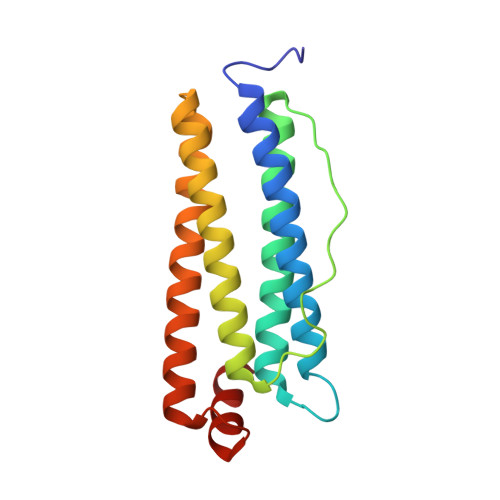Structural Insight into Binary Protein Metal-Organic Frameworks with Ferritin Nanocages as Linkers and Nickel Clusters as Nodes.
Gu, C., Chen, H., Wang, Y., Zhang, T., Wang, H., Zhao, G.(2020) Chemistry 26: 3016-3021
- PubMed: 31820500
- DOI: https://doi.org/10.1002/chem.201905315
- Primary Citation of Related Structures:
6KH0, 6KH1, 6KH3, 6KH4, 6KH5 - PubMed Abstract:
Metal-organic frameworks (MOFs) hold great promise for numerous applications. However, proteins, carriers of biological functions in living systems, have not yet been fully explored as building blocks for the construction of MOFs. This work presents a strategy for the fabrication of binary MOFs. Considering octahedral ferritin symmetry, four His 2 (His-His) motifs were first incorporated into the exterior surface of a ferritin nanocage near each C 4 channel, yielding protein linkers with multiple metal-binding sites (bisH-SF). Secondly, by adding nickel ions to bisH-SF solutions triggers the self-assembly of ferritin nanocages into a porous 3D crystalline MOF with designed protein lattice, where two adjacent ferritin molecules along the C 4 symmetry axes are bridged by four dinuclear or tetranuclear nickel clusters depending on Ni 2+ concentration. This work provides a simple approach for precise control over a binary protein-metal crystalline framework, and the resulting MOFs exhibited inherent ferroxidase activity and peroxidase-like catalytic activity.
Organizational Affiliation:
Beijing Key Laboratory of Functional Food from Plant Resources, College of Food Science & Nutritional Engineering, China Agricultural University, Beijing, 100083, China.
















